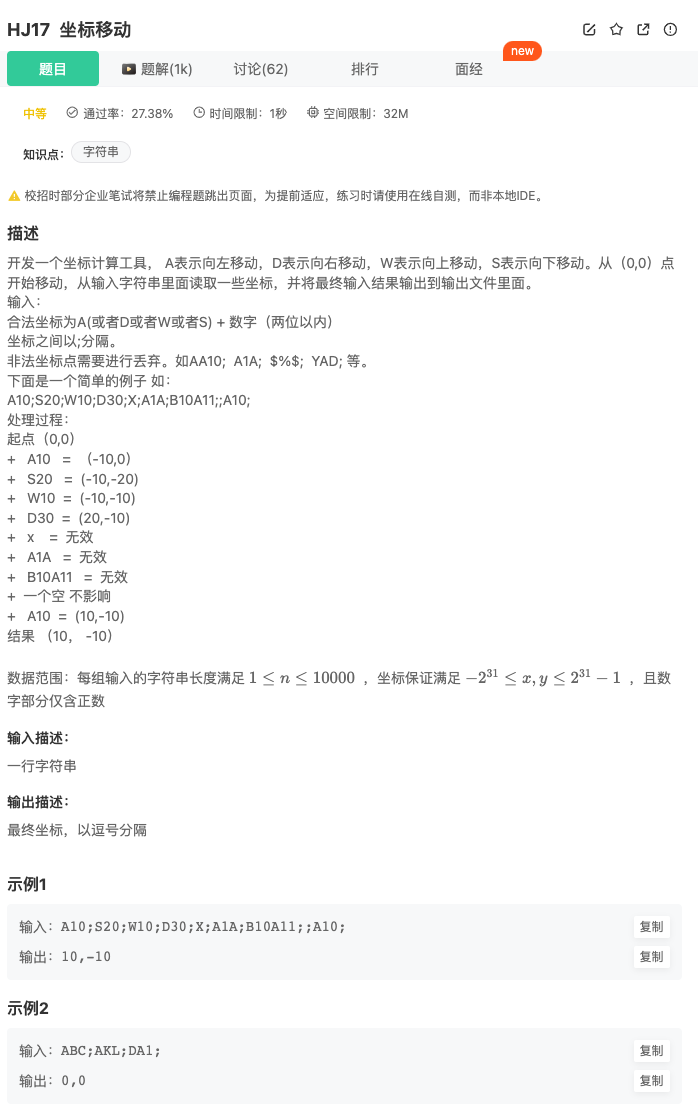分类:字符串
知识点:
-
正则匹配 re.match(pattern, move)
-
格式字符串,可以在字符串中直接引用变量 f"{x},{y}"
题目来自【牛客】

import re def is_valid_coordinate(move): # 使用正则表达式验证移动是否合法 # ^: 表示字符串的开始。# [ADWS]: 匹配一个字符,该字符必须是 A、D、W 或 S 中的一个。# [0-9]{1,2}: 匹配 1 到 2 个数字。[0-9] 表示匹配任意一个数字,{1,2} 表示前面的数字可以重复 1 到 2 次。# $: 表示字符串的结束。pattern = r'^[ADWS][0-9]{1,2}$' # 返回匹配则返回<re.Match object; span=(0, 3), match='A12'> # 没有则返回Nonereturn re.match(pattern, move) is not None def calculate_coordinates(input_string): # 初始化坐标为原点 x, y = 0, 0 # 遍历输入字符串中的每个字符 moves = input_string.split(';') for move in moves: # 检查移动是否有效 if is_valid_coordinate(move): # 获取移动方向和距离 direction = move[0] distance = int(move[1:]) # 距离为输入字符串的剩余部分,不需要额外验证 # 根据方向移动对应的距离 if direction == 'A': # 向左移动 x -= distance elif direction == 'D': # 向右移动 x += distance elif direction == 'W': # 向上移动 y += distance elif direction == 'S': # 向下移动 y -= distance else: # 如果移动无效,忽略它 pass return f"{x},{y}" # 返回最终的坐标,格式化为字符串 # input_string = "A10;S20;W10;D30;X;A1A;B10A11;;A10;"
input_string = input().strip()
output_string = calculate_coordinates(input_string)
print(output_string) # 输出:10, -10





跨站请求伪造漏洞)



——Sensorless之有功磁链Active Flux电压模型)
)


)



)
)
